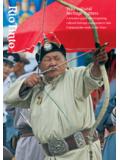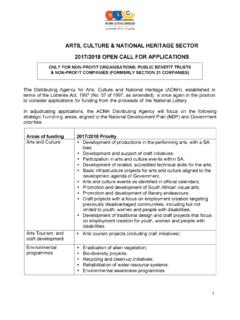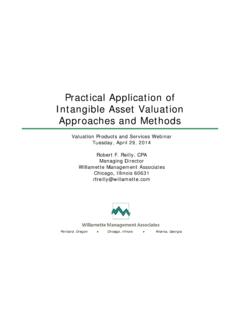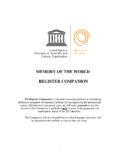Transcription of Dear Robin, It was a great pleasure meeting you at …
1 Dear Robin, It was a great pleasure meeting you at the ICOMOS symposium in Zimbabwe. This letter is a follow up to our discussion about the documentation of intangible heritage in Malawi. Since you are also involved in a similar project, the Museums of Malawi would like to share with and learn from your organization. What we are doing: The Museums of Malawi has recently embarked on a long-term project documenting the social aspects of Malawian culture. The Royal Norwegian Embassy is funding the project. This exercise is meant to preserve the intangible heritage of Malawi by recording and documenting people s customs, traditions and beliefs on birth, burial, marriage, initiations, installations of chiefs, music and dance.
2 The targeted ethnic groups in Malawi are the Lomwe, Sena, Yao, Chewa, Ngoni, Tumbuka, Tonga, Lambya and Nkhonde. After completing the documentation of customs, traditions and beliefs of the people of Malawi the project will then focus on the recording and documentation of the intangible heritage of monuments and sites listed by government. To date, we have documented the Lomwe ethnic group in the Mulanje District in the country s Southern Region. We have photographs, audio tapes (testimonies), and videocassettes on marriage, initiations, burial, birth, chieftainship, music and dances of the Lomwe people.
3 The next targeted ethnic group will most likely be the Chewa of the Central Region. We will begin documentation as soon as funding is disbursed for the next trip to the field. How we do it: Fieldwork deals with one ethnic group at a time. It is estimated that it will take 30 days to document the intangible heritage of one ethnic group. It is expected that the length of the project will be 3 years. The personnel involved in the project are the ethnographer, 2 education officers, 2 photographers (still camera/video camera), a vernacular language specialist, a technical advisor and a driver.
4 The work plan to document each ethnic group is as follows: Pre-arrangements 1. Library research at a) The University of Malawi Chancellor College and the National Archives in Zomba b) The Malawi Broadcasting Company, TV Malawi, the Society of Malawi and the Information Department in Blantyre 2. Write notification letters to the District Commissioners concerned. On-site 3. Identify reliable informants with the help of District Commissioners, Chiefs, teachers, Members of Parliament, councilors, church leaders and businessmen and women. 4. The project team contacts each Traditional Authority within the boundaries of the ethnic group.
5 5. Information is collected through a) Observation b) Interviews c) Questionnaires: A structured questionnaire is used to gather information about the local area, village, region, vernacular language name, ethnic group, brief description of what is to be documented, date visited, names of informants and additional notes. 6. Findings are recorded through a) Video b) Photographs c) Tape recordings Follow-up 7. Processing and printing still camera film. 8. Editing of the videotapes by the Information Department. 9. Cataloguing the videotapes, photographs and negatives.
6 10. Proper storage of the visuals and negatives. 11. Reviewing the documentation. Purpose or Use: The documentation of the intangible heritage of Malawi s ethnic groups has never been attempted before. Thus it is paramount that this exercise occurs before the individuals who hold this heritage are lost to us. The information gathered from informants is important in interpreting the Museum s sizeable ethnographic collections. This project will be used to develop materials for the museum education and outreach programmes in schools. In addition, the documented material will be preserved for future use such as research, education and entertainment.
7 In Malawi, the University of Malawi, the National Archives, TVM, MBC and the Information Department have shown great interest in having the material in order to make it available to the public. I hope this answers what you wanted to know. You may appreciate why I would like to cooperate with you in our endeavor to document the intangibles . What is this meeting in Belgium? I am interested to participate. MIKE GONDWE AFRICOM SOUTHERN AFRICAN REP.





